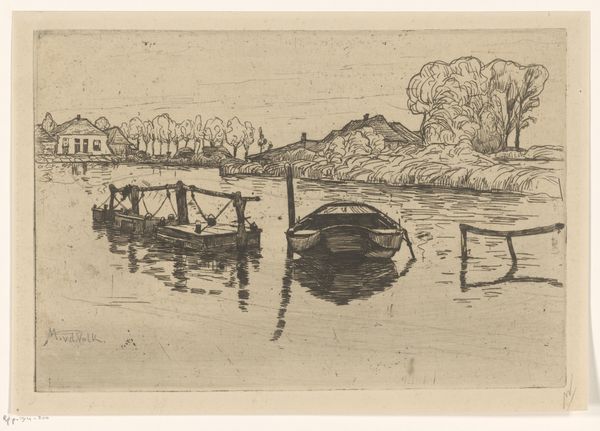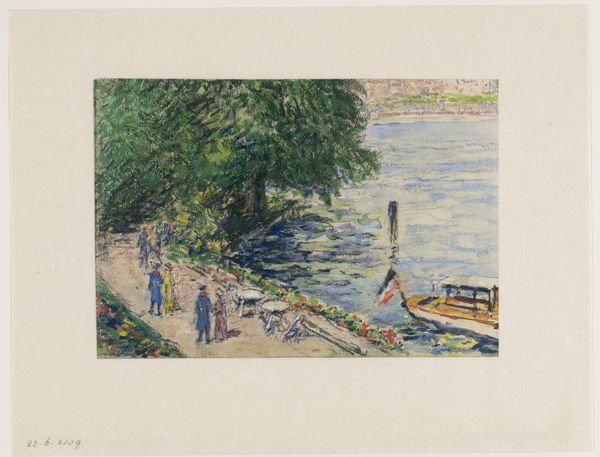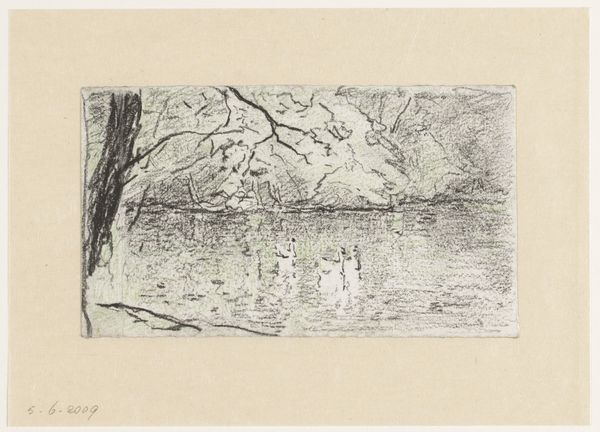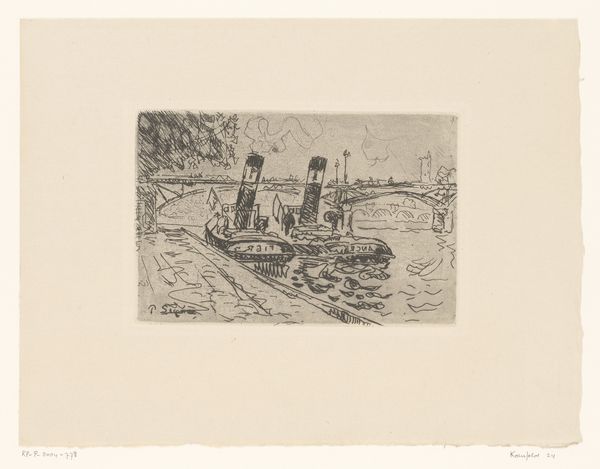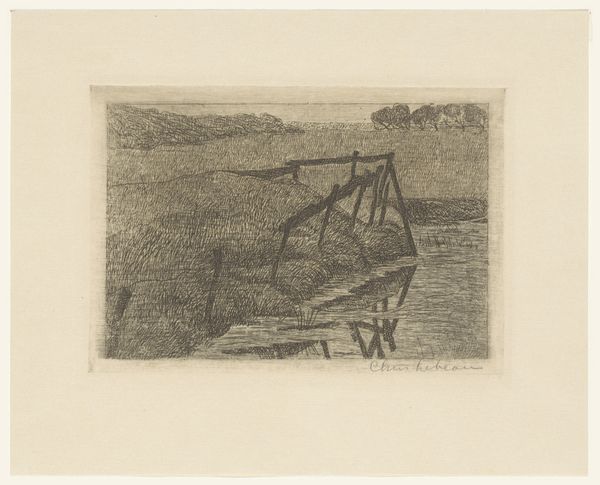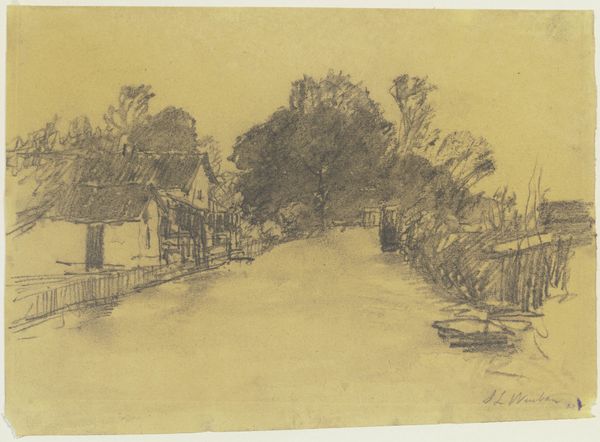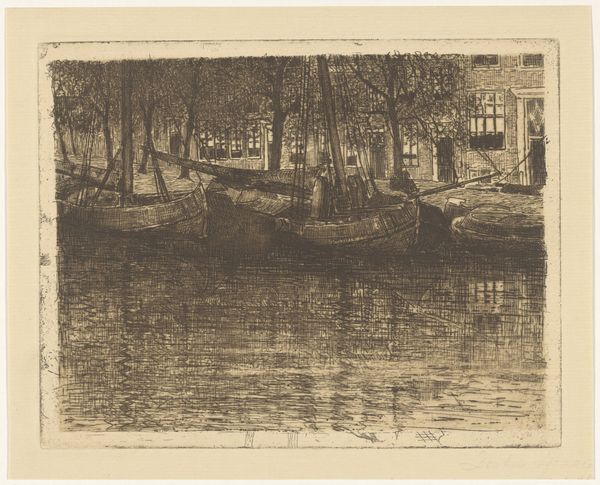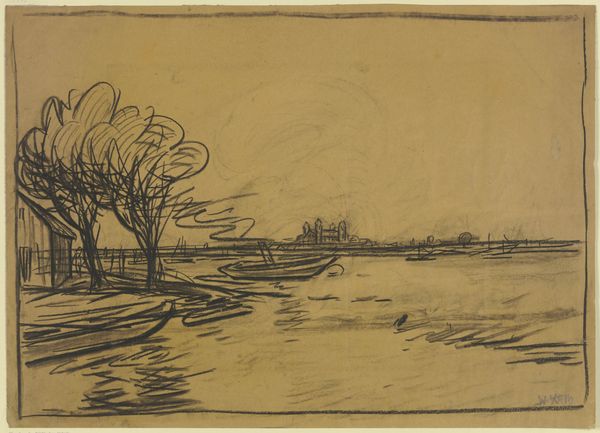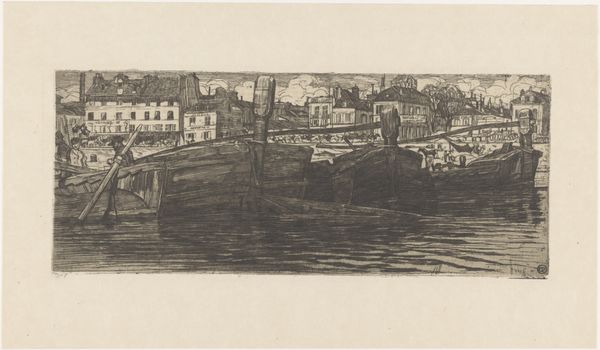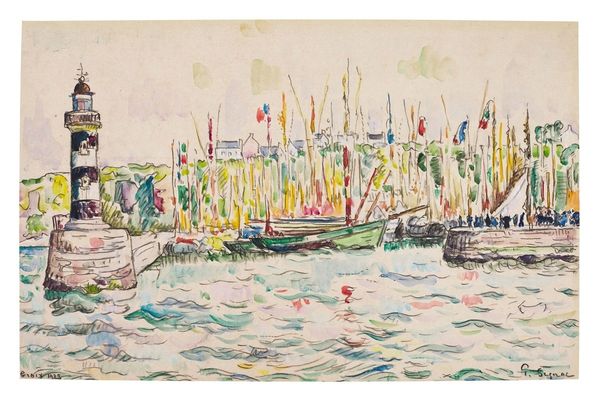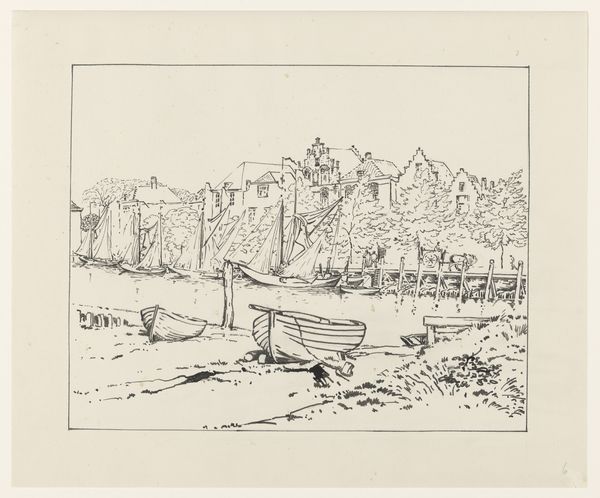
Dimensions: height 188 mm, width 242 mm
Copyright: Rijks Museum: Open Domain
Curator: Standing before us is Jan Toorop's "Kanaal bij Veere," created around 1913. It’s a captivating drawing rendered in colored pencil, now residing here at the Rijksmuseum. Editor: It has a gentle quality. The pastel-like strokes create an inviting space, an airy, plein-air scene reflecting on a particular social moment by the canal. Curator: Exactly. Note Toorop's material handling: The visible pencil strokes create a dynamic surface, animating the waterway with these vibrant refractions. It demonstrates an interesting intersection of Impressionist aesthetics with a distinct mark-making process. Editor: Absolutely. And what does that portend socially? Waterways like these were trade and transportation arteries but also places of leisure for an emerging middle class. The figures in the boats… what do you imagine they represent in the landscape? Is this a depiction of accessibility and the commodification of nature, a democratizing element? Curator: Perhaps both. Veere was also experiencing significant change as an active participant in trading and commerce during this era, before WWI took its toll. This image becomes this visual record of industry. Editor: Interesting! The bright sail, positioned at the periphery, feels both part of and separate from, like a looming signifier. Does the artwork express the growing globalized system around maritime activities by drawing the viewer's attention? How are we to consider labor, power, and leisure at play in a piece such as this? Curator: Indeed. And it’s a lovely contrast of this sort of free, loose draftsmanship alongside these more geometric buildings behind and the reflections themselves are little touches of modernist, optical experimentation within this naturalistic representation. Toorop also used colour to structure this world in an affective mode, even as a sketch for another, perhaps. Editor: That exploration of materiality, the application of colour to capture light reflecting, is particularly evident in the water's surface. I am particularly moved by his choices that, within this moment in history, ask, "What were the tensions experienced at the intersection of labor, commodification and pleasure within changing societies?" Curator: By examining both its creation and its cultural setting, we come to grasp it’s place within the development of modernity through commerce and manufacturing. Editor: Yes. The simplicity belies its richness. A fleeting glimpse offering a lasting and poignant view on a particular nexus of people, power, and place.
Comments
No comments
Be the first to comment and join the conversation on the ultimate creative platform.
